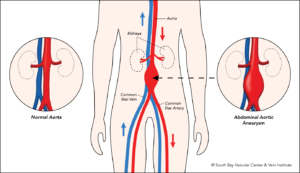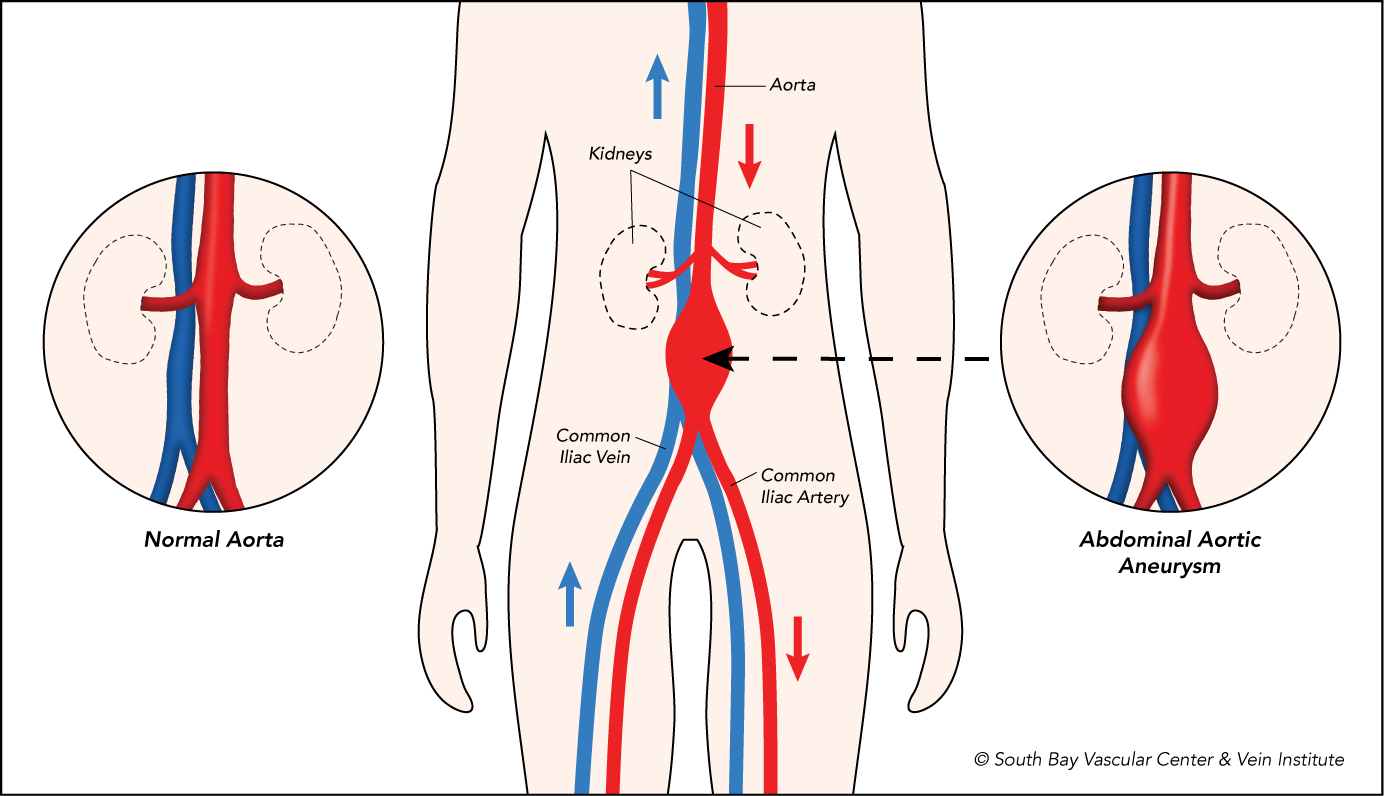Of the many reasons that a patient can be referred to a vascular surgeon, one is that their referring physicians believes that their patient may have developed an aneurysm. Aneurysms, typically speaking, form in arteries which are the specialized vessels that carry blood from the heart to the rest of the body under high pressure. When the wall of an artery weakens, it can develop into a balloon-like dilation called an aneurysm. (See below). This most commonly occurs in the main blood vessel in your abdomen, which is called the abdominal aorta. When the blood vessels dilate to 50% greater than their normal diameter, the vessel has become an aneurysm.

Interestingly, the reason why aneurysms form is actually poorly understood. We know that smoking cigarettes and a family history of aneurysms increases the risk that a patient will develop an aneurysm, but no direct cause-effect relationship has been established. Diabetes mellitus, however, appears to have a protective effect. That is, the presence of diabetes appears to help prevent aneurysms! The other health risks of diabetes including neuropathy and infection, of course, make diabetes an undesirable health problem to have.
Aneurysms have two main catastrophic problems: Rupture and thromboembolization. (to learn more about aneurysms visit our website at https://www.southbayvascular.com/aneurysms/ Rupture refers to a tear in the wall of the blood vessel resulting in a leakage of blood. When aneurysms in the abdomen rupture, the amount of blood loss into abdomen can be life threatening and result in death within seconds. Thromboembolization refers to the formation of blood clot within the aneurysm that then breaks off and goes somewhere else. When aneurysm and associated blood clot form in the abdomen, these blood clots can break off and travel to the leg resulting in a lack of blood flow to the legs. Such a sudden cessation of flow to the legs can result in the death of the foot and/or legs within hours.
As you can see arterial aneurysms can be very troublesome. Luckily, vascular surgeons have many tools and instruments that we can use to treat these aneurysms in a minimally invasive way. In my blog next week, I will go over the different options for treating aneurysms in the abdomen. If you or someone you love have been told that you may have an aneurysm, please call our office immediately to schedule an appointment for a full vascular work-up. 408-376-3626
We Can Help!
